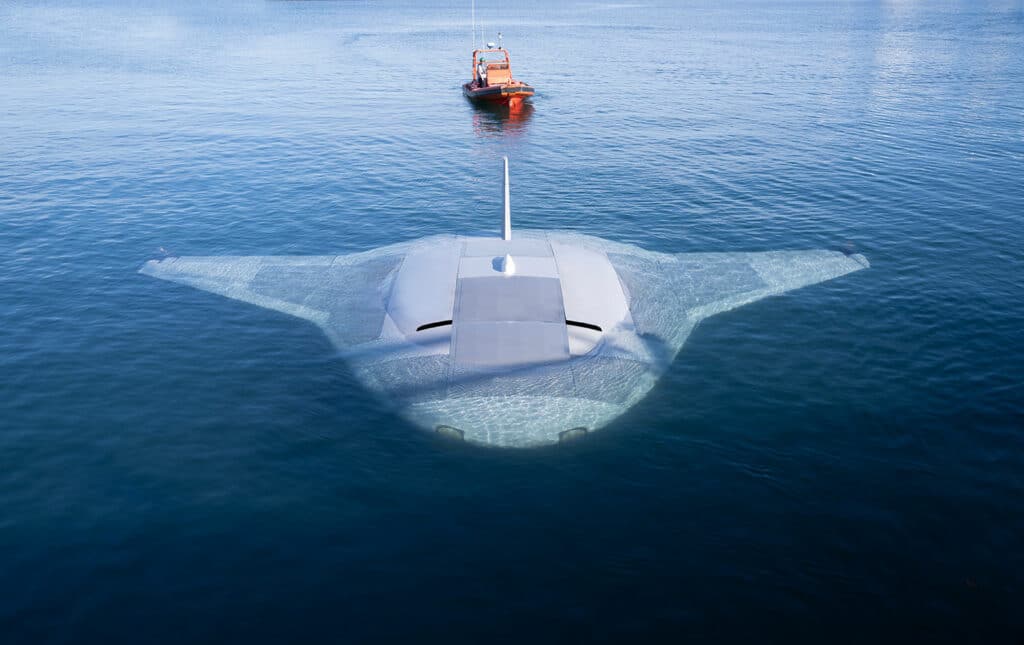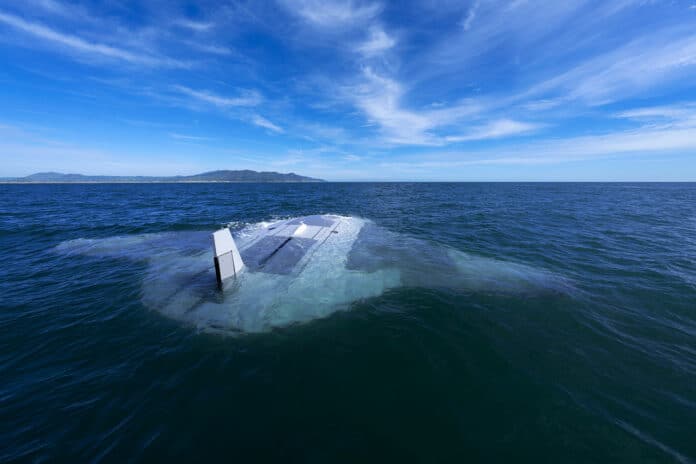The Manta Ray prototype uncrewed underwater vehicle, developed by Northrop Grumman, recently underwent full-scale in-water testing off the coast of Southern California in February and March 2024. The testing showcased the vehicle’s impressive hydrodynamic performance, including submerged operations that utilized all of its modes of propulsion and steering, such as buoyancy, propellers, and control surfaces.
“Our successful, full-scale Manta-Ray testing validates the vehicle’s readiness to advance toward real-world operations after being rapidly assembled in the field from modular subsections,” said Dr. Kyle Woerner, DARPA program manager for Manta Ray. “The combination of cross-country modular transportation, in-field assembly, and subsequent deployment demonstrates a first-of-kind capability for an extra-large UUV.”
Northrop Grumman was able to ship the Manta Ray prototype in subsections from Maryland to California and demonstrate how easy it is to assemble. This could potentially lead to rapid deployment throughout the world without taking up too much valuable pier space at naval facilities.
“Shipping the vehicle directly to its intended area of operation conserves energy that the vehicle would otherwise expend during transit,” said Woerner. “Once deployed, the vehicle uses efficient, buoyancy-driven gliding to move through the water. The craft is designed with several payload bays of multiple sizes and types to enable a wide variety of naval mission sets.”

The Manta Ray project aims to develop long-duration, long-range, payload-capable UUVs for persistent operations in dynamic maritime environments. DARPA is working with the U.S. Navy to test and transition this technology. A second Manta Ray performer, PacMar Technologies, is continuing to test its full-scale energy harvesting system in 2024.
According to primary contractor Northrop Grumman, the Manta Ray has modular construction and energy-saving systems. It can even anchor itself on the sea floor and enter hibernation mode. The undersea propulsion systems are low-power, and they have new sensors to detect and classify threats and hazards underwater. The navigation command and control systems seem highly efficient, and they also use cutting-edge anti-biofouling and material degradation approaches.
The recent test period, conducted in February and March, focused on the Manta Ray’s performance while submerged and the operation of its propulsion, steering, buoyancy, propellers, and control surfaces. The sub could even be disassembled and packed in five standard shipping containers before being sent to California.
